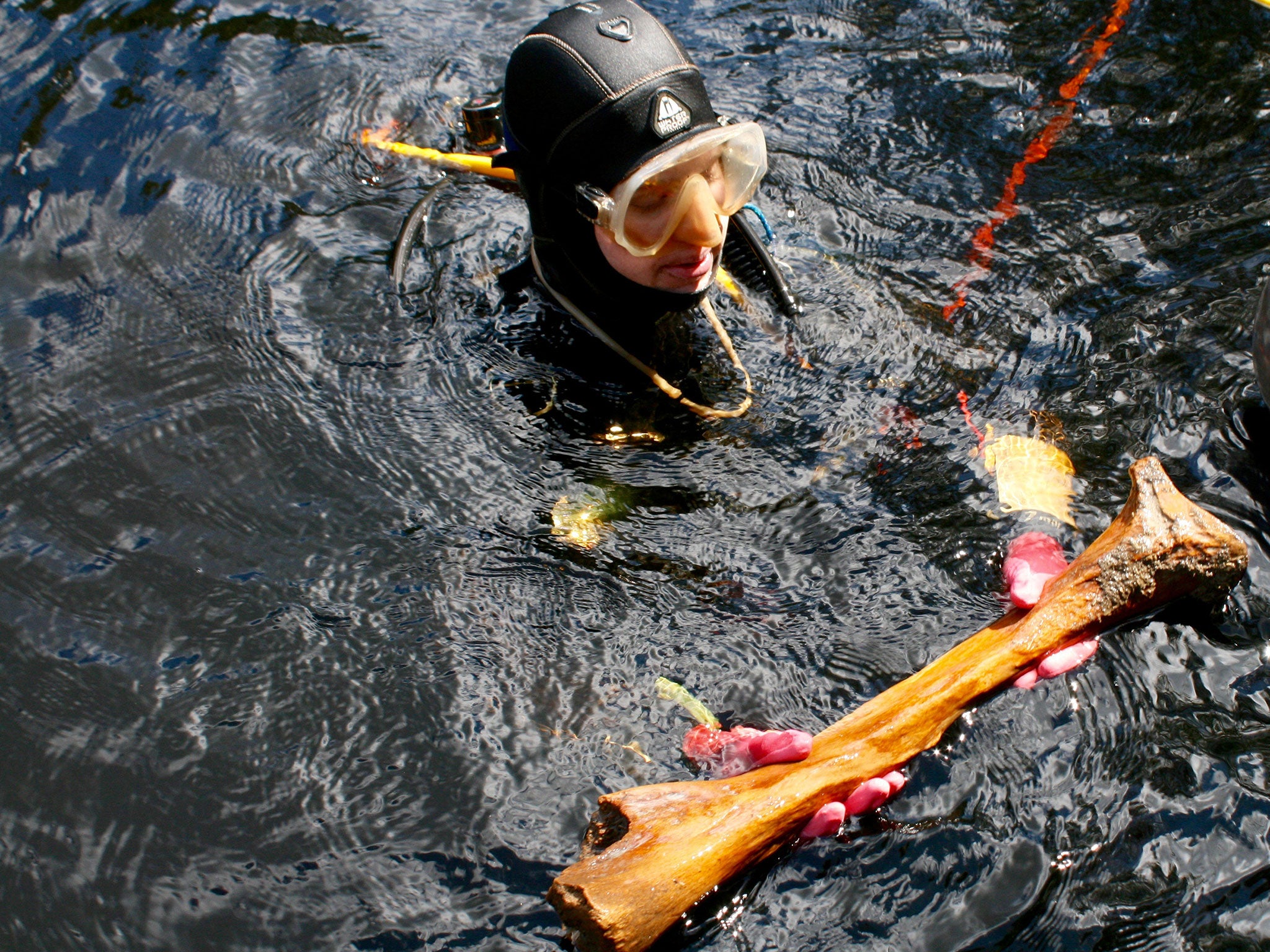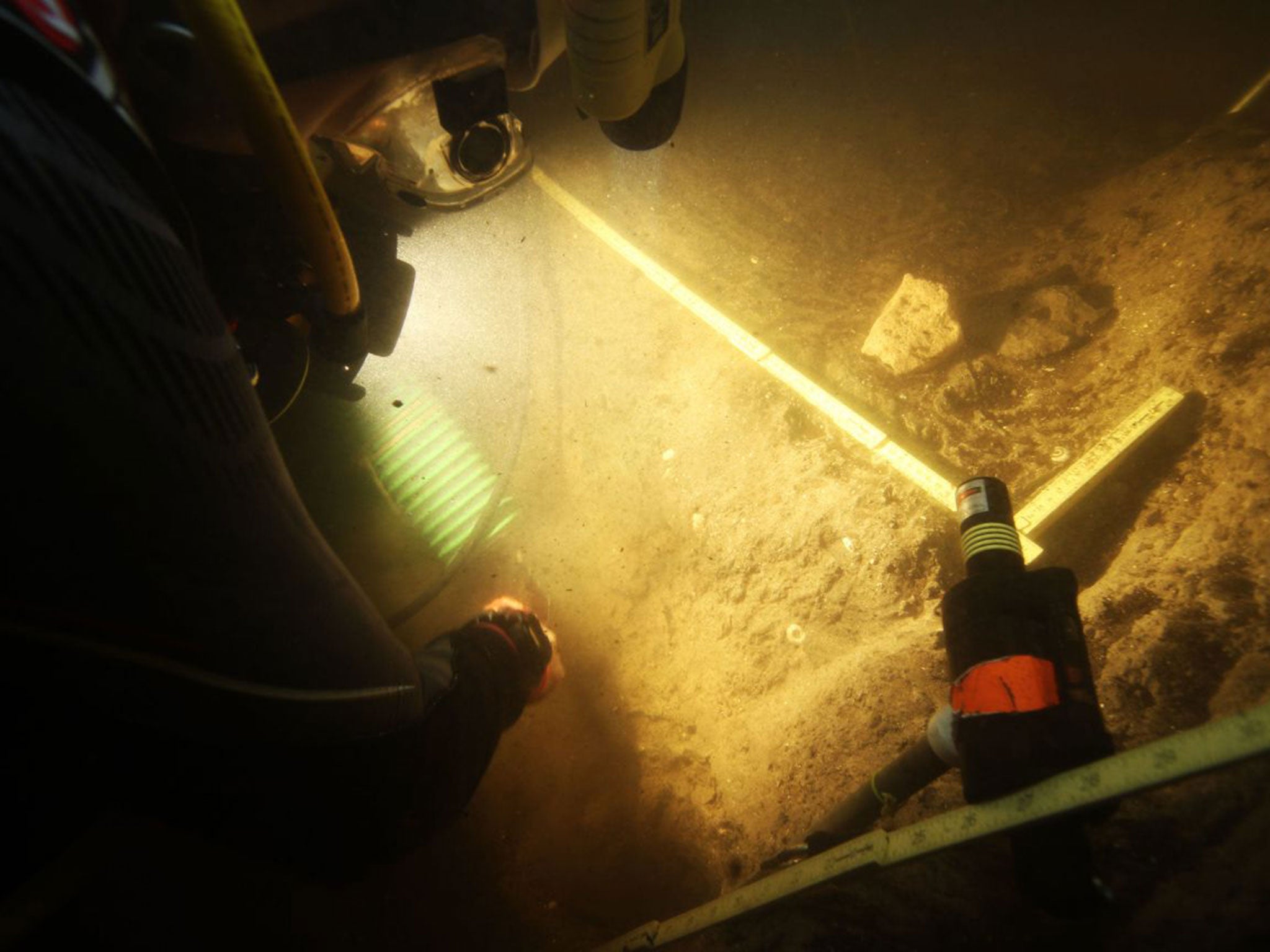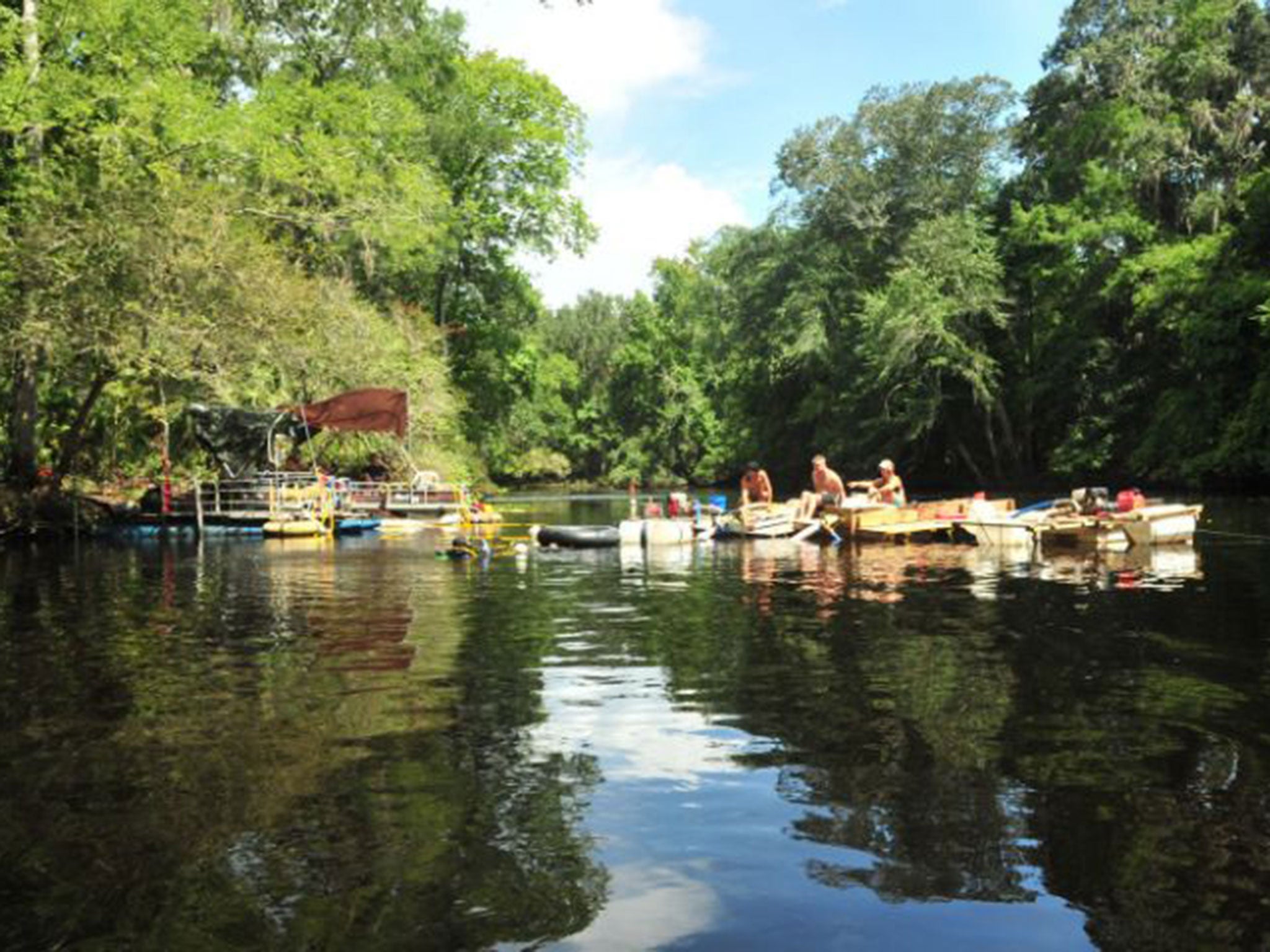The Independent's journalism is supported by our readers. When you purchase through links on our site, we may earn commission.
Florida sinkhole discovery suggests humans lived in America 1,500 years earlier than previously thought
Archaelogical consensus held that humans first lived in the Americas 13,000 years ago, but the new finds cast doubt on this

Your support helps us to tell the story
From reproductive rights to climate change to Big Tech, The Independent is on the ground when the story is developing. Whether it's investigating the financials of Elon Musk's pro-Trump PAC or producing our latest documentary, 'The A Word', which shines a light on the American women fighting for reproductive rights, we know how important it is to parse out the facts from the messaging.
At such a critical moment in US history, we need reporters on the ground. Your donation allows us to keep sending journalists to speak to both sides of the story.
The Independent is trusted by Americans across the entire political spectrum. And unlike many other quality news outlets, we choose not to lock Americans out of our reporting and analysis with paywalls. We believe quality journalism should be available to everyone, paid for by those who can afford it.
Your support makes all the difference.Archaeologists investigating a Florida sinkhole have unearthed evidence suggesting humans lived in the Americas around 14,500 years ago.
On the Aucilla River, near Tallahassee, the 8m deep Page-Ladson sinkhole was found to contain a stone knife and animal bones which had apparently been marked by humans.
The finds add further weight to arguments against the theory that the Americas were first populated by the ‘Clovis’ people 13,000 years ago, whic has been the mainstream archaeological consensus for many years.
The team, led by Dr Jessi Halligan, an anthropology professor of Florida State University, found a ‘biface’ – a rudimentary knife-like object made from stone with a blade chipped into one side. “There is absolutely no way it is not made by people," Dr Halligan told the Smithsonian Magazine. "There is no way that's a natural artefact in any shape or form."
Bones of a mastodon – a mammoth-like creature which became extinct more than 10,000 years ago – were also found at the site, which was believed to have been a watering hole in the period the artefacts date from. The bones were engraved with groove-like marks which the team said were made by people, perhaps while dismembering a carcass for meat.

The site would have been an ideal hunting ground, according to the researchers, and attracted other creatures too – canine bones were also discovered, though it is unknown if the animals were companions to the humans or just scavengers.
The findings, published in the journal Science Advances, present “unequivocal” evidence of a pre-Clovis population in the Americas, according to senior researcher, Dr Michael Waters of Texas A&M University. “We have clear artefacts, they were excavated meticulously, and they were in place,” Dr Waters told National Geographic.
He continued: “They were in a solid geological context, covered by four meters of sediment, and covered by a shell layer that sealed the complete deposit, and itself dated to 14,400 years ago. We have 71 radiocarbon dates throughout the entire sequence. If people don’t believe this site, they’re not going to believe anything.”

Dr Michael Faught, an underwater archaeologist and reviewer of the team’s report, said the findings are “unassailable”.
Until recently, it was considered extremely controversial to dispute the Clovis theory – that the Americas were first populated by Paleo-Indians around 13,000 years ago. Clovis is the name of a town in New Mexico where early stone tools were found in the early 20th century.
"Fifteen years ago, if you proposed a pre-Clovis site, you had to expect that everybody thought you were a quack," Dr Halligan said. “Ten years ago, some people would have been supportive and most people would have thought you were a quack."
She added that the findings are a “big deal” because “it means we were wrong about Clovis being first and we need to start figuring out what the real story is".
The Clovis narrative held that the first people to populate the Americas entered the continent from Alaska.
However, this theory now seems less viable, as ice sheets which covered the north of the American continent are only believed to have melted into an ‘ice-free’ corridor around 14,000 years ago, 500 years after the estimated date of the new discoveries.
Join our commenting forum
Join thought-provoking conversations, follow other Independent readers and see their replies
Comments